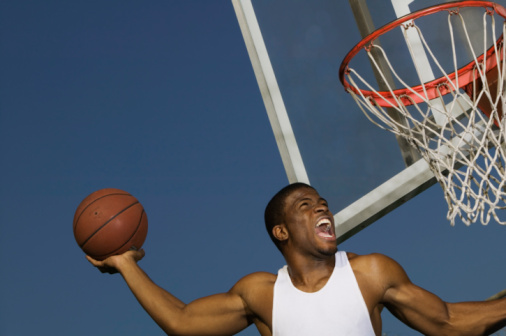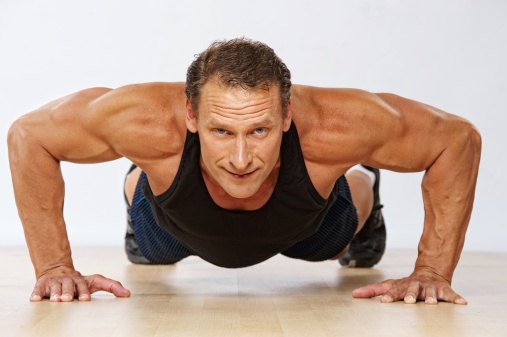28-Days-to-Lean Meal Plan
With the right plan and the right discipline, you can get seriously shredded in just 28 days.
Read article

Benji, it really depends. Each athlete has different weak points. Let’s look at some of the main contributing factors for building up your jumping power.
Technique:
First thing you need to look at is your technique. Do you know how to jump? Do you know how to sit back and load the hips, instead of just loading your quads? Are you using your arm swing to your advantage? You need to dial in your technique with your coach. Simply bracing or tightening your torso, while you load your hips back (hip hinge) during your landing AND take off, is the key to fully utilizing your larger lower body muscles and performing the jump correctly.
Reactive Strength:
How about power? Are you powerful? Do you have the reactive strength to make the movement explosive? Can you load into the jump and come back up fast? Your ability to jump fast and be reactive is an expression of the stretch shortening cycle. Can you efficiently load the soft-tissues of your body, accumulate elastic energy and express it powerfully? To become more reactive, jump training (hops, bounds, jumping rope), plyometrics (depth jumps, alternating split jumps), dynamic hip hinge movements (kettlebell swings, power cleans) can be incorporated into your program.
Unrestricted Movement:
If you’re spending a ton of time each week practicing in high top basketball sneakers and spending your free time on the Xbox blasting campers in COD, then you’re probably locked up in your ankles, hips and upper back. This means you would be able to get into better positions to jump, land and approach the next jump if you focus on your mobility across these problem areas. Exercises like squat to stand and striders with rotation will help your hips, while foam rolling the upper back and various shoulder stretches will open up your back.

Charles, I can definitely empathize with not having enough time to train, but there is hope brother. First, you need to get outside of the mindset that you need to spend an hour or more in the gym to get results. You can get a killer workout in as little as 15-20 minutes.
All you need to do is focus on incorporating compound exercises——and keeping your rest periods short. Also, if you plan out your workouts beforehand, you can structure them with supersets of non-competing muscle groups. This just means two exercises that you perform back-to-back with minimal rest, where the first exercise doesn’t affect the execution of the second exercise.
For example:
1A) Bench Press – 4×6, minimal rest
1B) Pull-ups – 4×8, 60 seconds rest
Or, how about this one:
1A) Deadlifts – 6×3, minimal rest
1B) Push-ups with feet elevated – 6×20, 60 seconds rest
The key is to keep moving and keep the intensity high. Push the pace with minimal rest periods and focus on quality repetitions with the compound exercises.
You also might find it a better scenario for you, if you schedule multiple 15-minute workouts during a particular day, instead of one big workout lasting an hour. This will really free up your time, without sacrificing your training, and give you more quality time with the kids.

Meet the Lift Doctor
Jim Smith is a highly respected, world-renowned strength and conditioning coach. A member of the LIVESTRONG.com Fitness Advisory Board, Jim has been called one of the most "innovative strength coaches" in the fitness industry. Training athletes, fitness enthusiasts and weekend warriors, Jim has dedicated himself to helping them reach "beyond their potential." He is also the owner of Diesel Strength & Conditioning in Elmira, NY.
Notifications